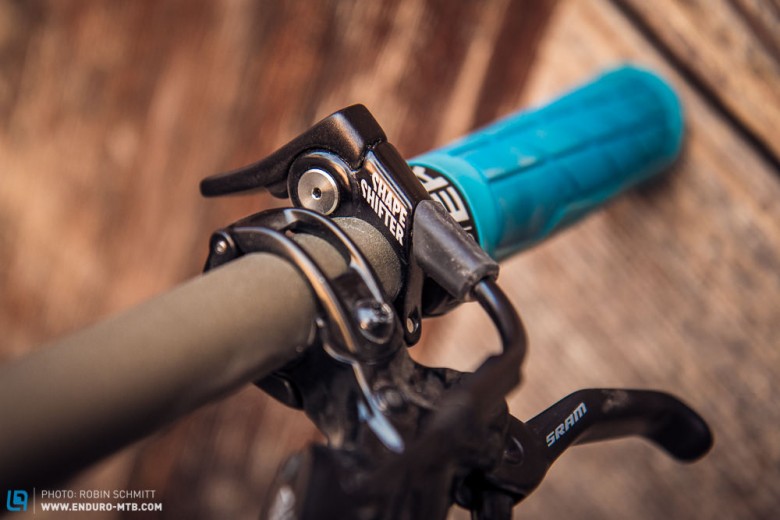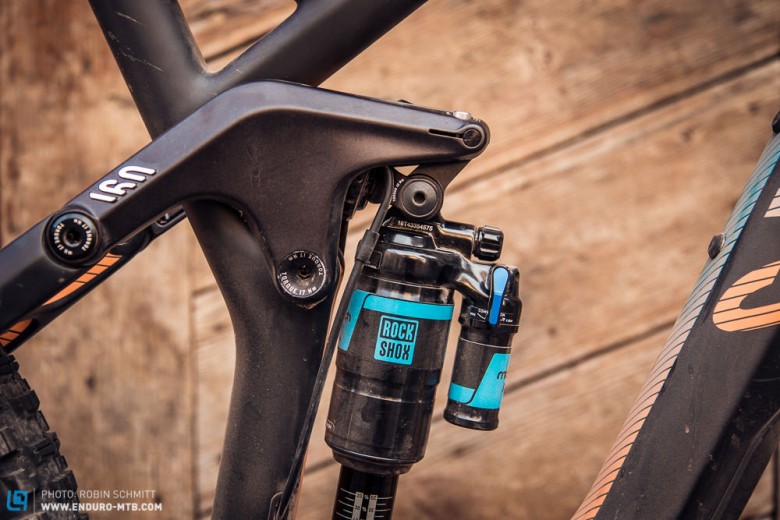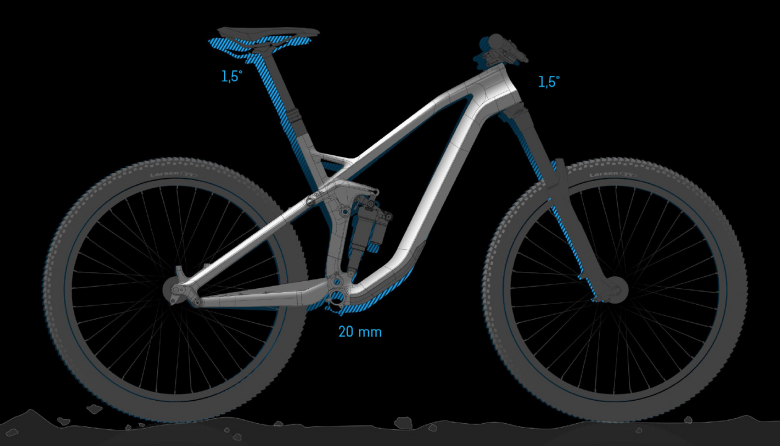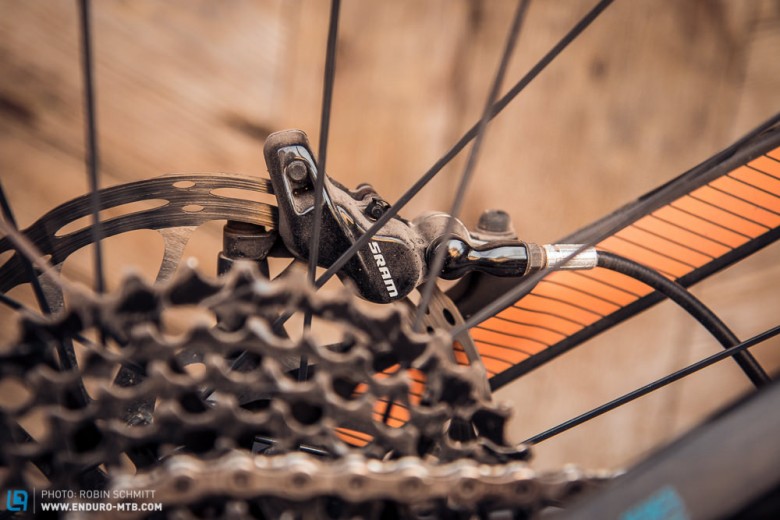Revolution? The all-new Canyon Strive CF 2015 with Shapeshifter

Finally they have let the cat out of the bag – or better said, the suspension system! More than one year ago we already could see the newly contracted Fabien Barel winning the first-ever Enduro World Series in Punta Ala on a prototype of the new Strive CF with a secretive cover on the rear shock. A bike, that Fab rode last year’s whole season, that was spotted at the EWS in Chile with a swirly camouflage paintwork and obviously in carbon early this year and has now been presented officially in Alsace, France.

The heart of the new Canyon Strive CF is called Shapeshifter, a technology that will change the Strive CF as much as the traditional categorization of bike and their intended use. Later we will dig deeper into that.

In the eyes of the German bike brand enduro is a synonym for mountain biking in its purest form. Enduro riders need to be able to handle technically demanding trails. Uphill, downhill, whatever – you’ve just got to ride it. The exact same goes for Enduro bikes, but this is where challenges begin to emerge.
Today’s trail bikes climb like XC bikes and go down like DH bikes from 10 years ago. That’s an impressive development if you have been involved with bikes long enough to feel and ride those bikes back in the days. With the innovative Shapeshifter, Canyon makes one big step forward towards challenging today’s XC and DH bikes. The Shapeshifter system shall allow the rider to change the whole character of the bike to suit the terrain they are riding. Two bikes in one.

The fundamental question during the development process was: “How do you produce something that unites the climbing characteristics of a lightweight XC bike with the ability to attack any descent like a big travel downhill rig??“ With the new Shapeshifter, Canyon claims to have found the right balance between variability, usability and performance. Fabien Barel himself presents us in this video the technology and its claimed benefits.
This was the theory, let’s get into detail!

The frame of the Strive CF is made – except for the rocker link – out of carbon. The extensively tested frame, both in the laboratory and the world’s racing circuits is supposed to be even stronger than most DH frames fabricated in aluminium. Weighing in at 2.400 gram without rear shock is no top-level compared to the competitive field of trail bikes but considering the additional weight of the Shapeshifter (some additional 200 grams), the frame is relatively pretty light.
The Shapeshift Technology:

Constant changes in terrain place incredibly diverse demands on a bike. Rider weight gets transferred all over the place depending on what you’re taking on. While climbing, the back wheel bears up to 100% of the load, on the flats this drops to around 70%. When riding steep descents all this weight then gets transferred to the front wheel. To cope with these changes, suspension can be adjusted for climbing by reducing sag, travel and having an altogether firmer setup, which in turn results in steeper seat and steering angles. When the trail heads back down, however, the exact opposite is required: more sag, more travel, flatter angles and a lower position on the bike are all ideal. Most Enduro bikes try to strike a balance between these two setups.







The special benefit of this system is that you get two fundamentally different geometries, suspension rates, and travel settings to choose from, all without the need of a specially designed rear shock.


In XC mode, the bottom bracket is higher (365 mm) to allow more clearance over roots and rocks. The steeper head angle (67.5°) means quicker handling on technical climbs, while a more upright seat position (seat angle 75°) results in better power transfer and more load on the front wheel for improved balance uphill.
In DH Mode the rider’s centre of gravity is lowered thanks to a lower bottom bracket (345 mm) and a slacker seat (73.5°) and
head angle (66°). Load is spread more evenly across the bike for more stability and control at speed and giving a much surer feel when taking on steep descents.
The geometry difference is achieved through combining the action of the Shapeshifter with the corresponding effect on sag due to the change in suspension leverage ratio.

Canyon recommends a sag of approx. 25-30% in DH Mode at 160 mm of travel. Switching to XC Mode that means that you’ll have about 15 % of sag due to the change in suspension leverage ratio. Additionally the weight shift due to the change of the geometry makes that you move forward discharging the rear (suspension) resulting in an even more efficient position. Additionally you’ll have the choice to make use of the compression adjustments of the suspension elements. But according to Canyon you won’t need them.
Details of the frame:






The spec of the Canyon Strive CF 9.0 Race:
With a price of 4.299 Euros the Strive CF 9.0 Race offers an extremely good package with a spec list that will make every rider’s heart beat faster! The claimed weight is 12.6 kg.









The 2 different geometries of the Strive :

Canyon’s statement on their decision to offer 2 different kinds of geometries, called “Regular” and “Race”: The demands of Enduro riding are hugely diverse. From tackling the most extreme terrain around, to bombing down race tracks, to messing around on the local trails and in bike parks. To cover all these bases with just one geometry is not possible. That’s why we came up with a new concept to go alongside a Regular Geometry. Together with Fabien Barel, we developed our Race Geometry so that every Enduro rider can achieve the setup that suits them best. Race Geometry has a proportionally longer reach in relation to stack, the result being a longer front center and the rider’s weight positioned more centrally. This makes the bike more stable when taking on descents at speed. What’s more, a shorter stem keeps the handling direct and agile. Those after a versatile all-rounder will find the perfect match in our Regular Geometry, as found on the Spectral series. With a relatively shorter reach and front center in comparison to the Race Geometry, the result is responsive handling so you can maintain the flow down the trail.


So far the specs and technical details on the all-new Strive CF. How does the bike perform on the trail? Can the Strive CF fullfill what it claims to be? Read the review of the 9.0 Race model in the next days here! Stay tuned! Info about the complete model range (Strive CF 9.0 Team, Strive CF 9.0 SL, Strive CF 9.0 Race, Strive CF 8.0, Strive CF 8.0 Race), which ranks price-wise between 3.699 € and 4.999 € as well as full spec lists can be found at www.canyon.com.
Words & Photos: Robin Schmitt
Did you enjoy this article? If so, we would be stoked if you decide to support us with a monthly contribution. By becoming a supporter of ENDURO, you will help secure a sustainable future for high-quality mountain bike journalism. Click here to learn more.








